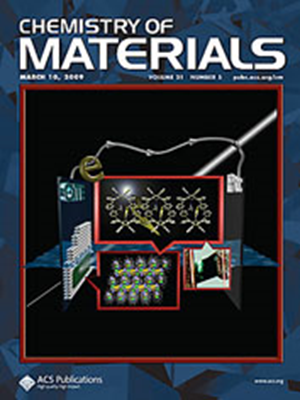Three-Dimensional Covalent Organic Frameworks Containing Diverse Nitrogen Sites for Gold Adsorption
IF 7.2
2区 材料科学
Q2 CHEMISTRY, PHYSICAL
引用次数: 0
Abstract
As the study progresses, it becomes more significant to explore the effect of specific active sites in covalent organic frameworks (COFs) on the gold adsorption process. Meanwhile, emerging 3D COFs are potential candidates for the adsorption of gold due to their rich pore and cage structures. In this work, to study the effect of the introduction and position of aromatic Ns on the gold capture, we synthesized three 3D COFs which have good selectivity, immunity to interference, reproducibility, and the potential to recover gold from e-waste. Compared to the COF containing only imine bonds as a blank, the introduction of triazine and pyridine rings resulted in a higher maximum adsorption capacity (2081 mg/g) and a faster adsorption rate (within 10 min), respectively. Theoretical calculations show that the presence of the triazine ring enhances the reduction of Au3+ by COF, while the synergistic effect of pyridine N and imine bonding shortens the adsorption time of gold. This work reveals the great potential of 3D COFs for gold adsorption and the roles played by the different types of aromatic Ns on gold capture, providing a reference for enhancing the adsorption performance of 3D COFs on gold.

求助全文
约1分钟内获得全文
求助全文
来源期刊

Chemistry of Materials
工程技术-材料科学:综合
CiteScore
14.10
自引率
5.80%
发文量
929
审稿时长
1.5 months
期刊介绍:
The journal Chemistry of Materials focuses on publishing original research at the intersection of materials science and chemistry. The studies published in the journal involve chemistry as a prominent component and explore topics such as the design, synthesis, characterization, processing, understanding, and application of functional or potentially functional materials. The journal covers various areas of interest, including inorganic and organic solid-state chemistry, nanomaterials, biomaterials, thin films and polymers, and composite/hybrid materials. The journal particularly seeks papers that highlight the creation or development of innovative materials with novel optical, electrical, magnetic, catalytic, or mechanical properties. It is essential that manuscripts on these topics have a primary focus on the chemistry of materials and represent a significant advancement compared to prior research. Before external reviews are sought, submitted manuscripts undergo a review process by a minimum of two editors to ensure their appropriateness for the journal and the presence of sufficient evidence of a significant advance that will be of broad interest to the materials chemistry community.
 求助内容:
求助内容: 应助结果提醒方式:
应助结果提醒方式:


